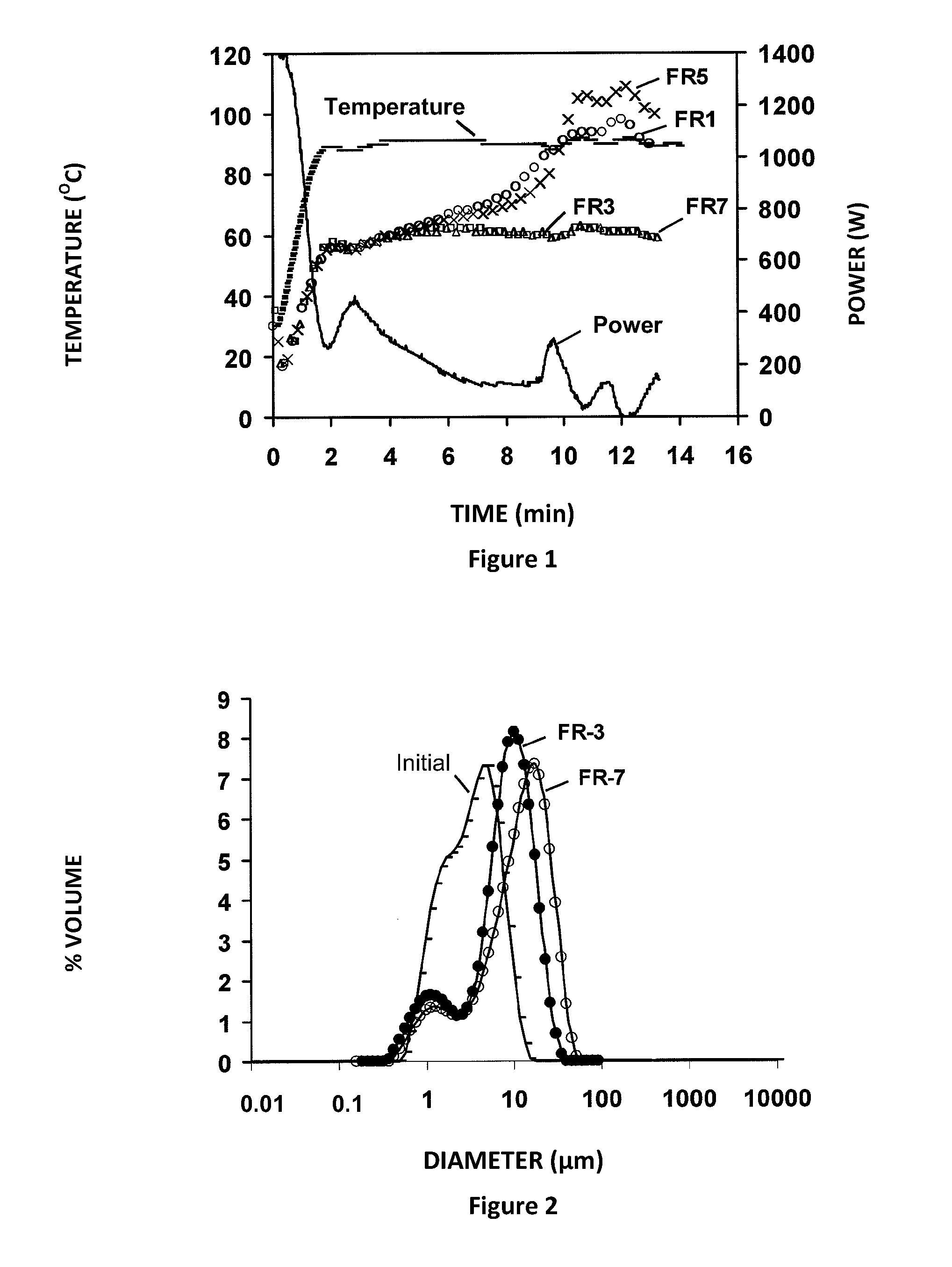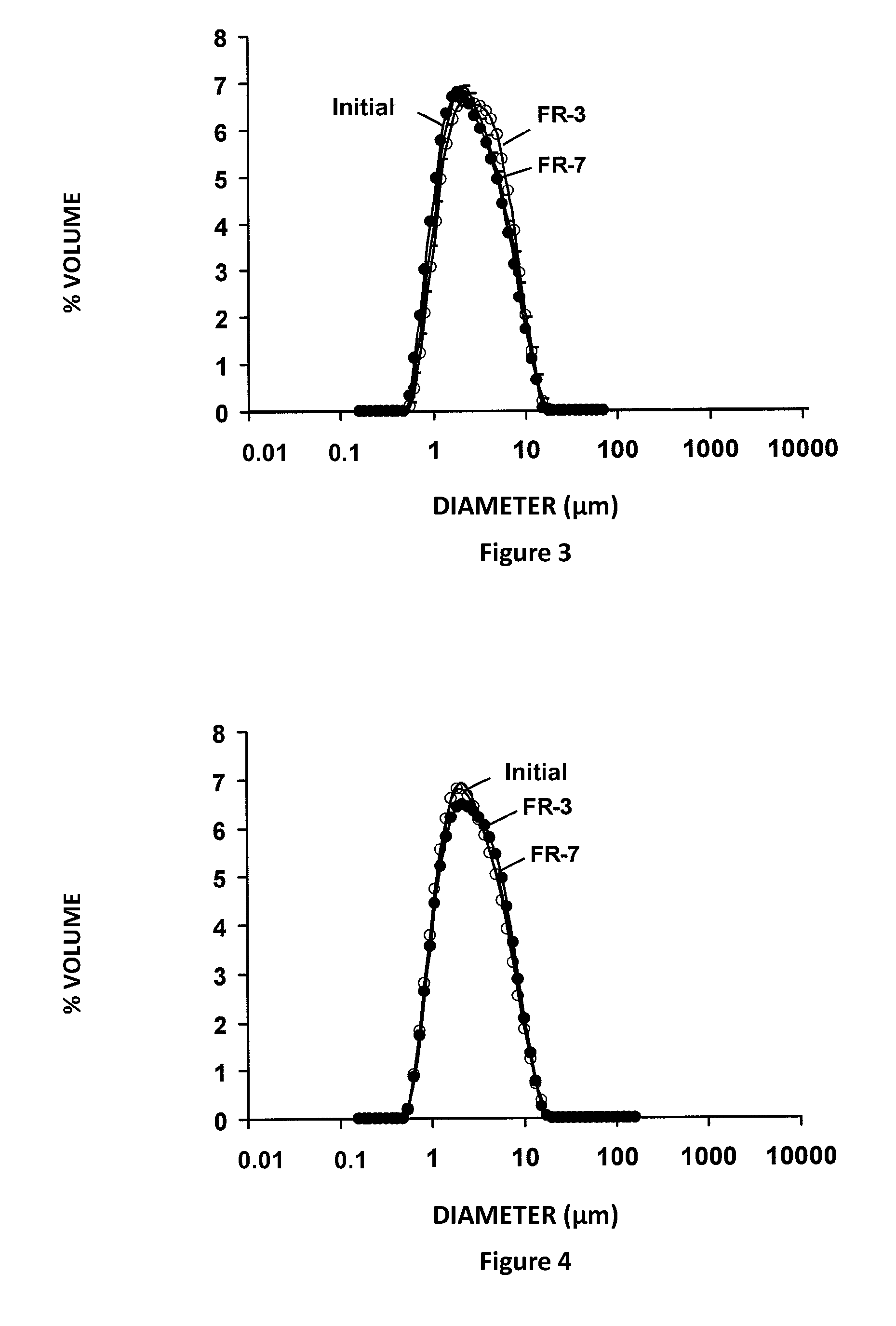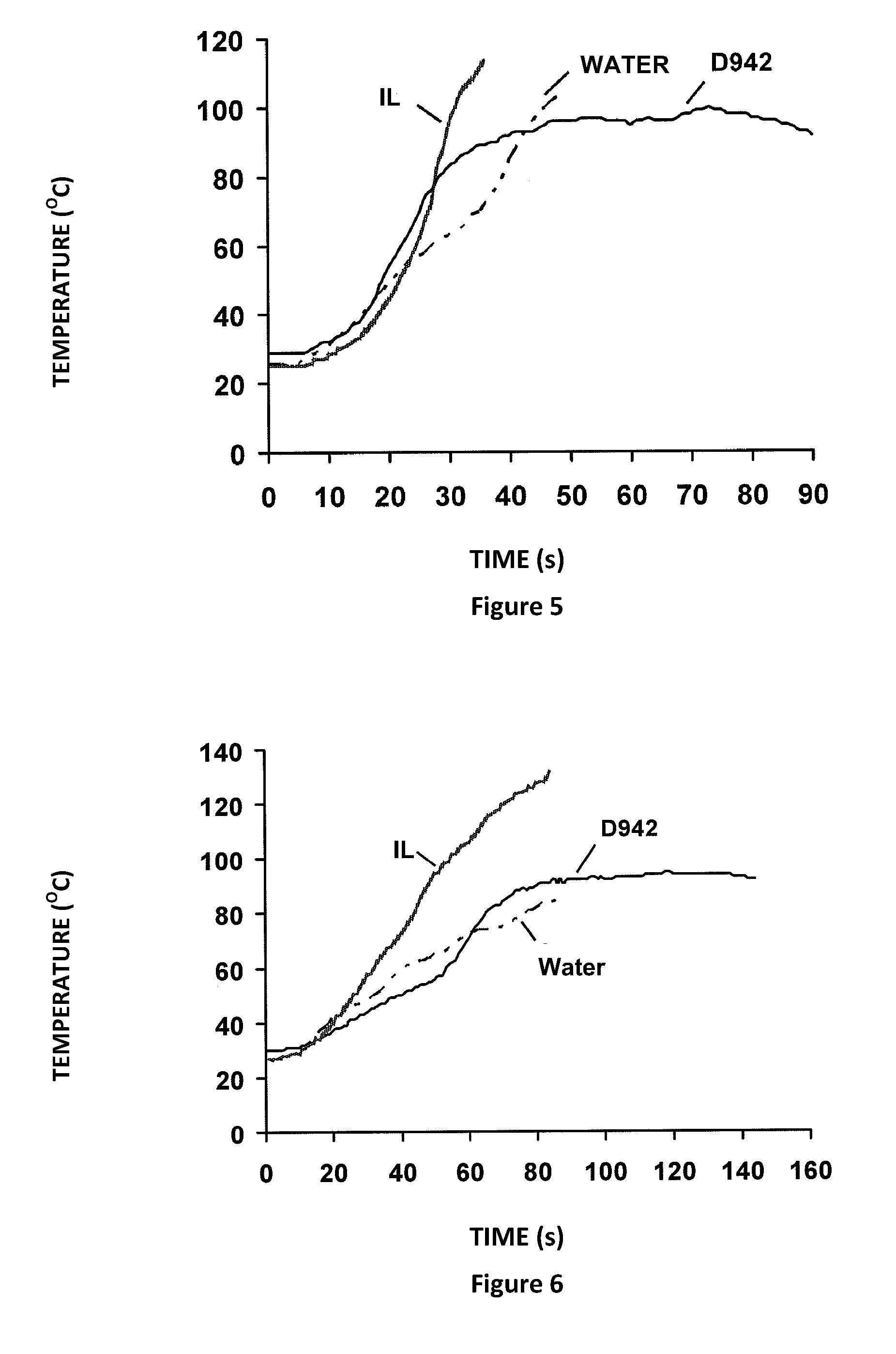Process for treatment of water/oil emulsions
a technology of water/oil and emulsion, which is applied in the direction of liquid solution solvent extraction, separation process, dewatering/demulsification with chemical means, etc., can solve the problems of high input and output consumption
- Summary
- Abstract
- Description
- Claims
- Application Information
AI Technical Summary
Benefits of technology
Problems solved by technology
Method used
Image
Examples
example 1
[0090]Example 1 illustrates the use of the microwave heating system with ionic liquid in two samples inserted into a reactor using omimBF4 ionic liquid as demulsifier and manual mixing and addition of IL solubilized beforehand in benzene, and distilled water as a dispersion phase of the emulsion.
[0091]The synthesized emulsion in this test presents the following initial properties: water content=31.7% and D (05)=3.5 μm. Processing time is 13.5 minutes.
[0092]D(0.5)=diameter associated with the midpoint of the particle-size distribution; the middlemost diameter that is larger than 50% of the diameters in the distribution and smaller than the other 50%.
[0093]FIG. 1 presents the applied power and heating curves given by infrared sensors and gas expansion of the microwave reactor throughout the experiment. It is worth pointing out that the gas sensor is immersed in the midst of the emulsion of the vessel of quartz located at position 1 and the IR sensor provides the temperature at the bac...
example 2
[0101]In Example 2, the system of microwave and conventional heating was used as well as omimBF4 ionic liquid, mixed manually and the addition of IL solubilized in benzene and distilled water as the dispersion phase of the emulsion.
[0102]The ionic liquid was inserted into two of the samples placed in the microwave reactor as with the conventional heating system. The synthesized emulsion in this test presents the following initial properties: water content=32.9% and D (0.5)=3.1 μm. Processing time was 30 minutes.
[0103]The heating curves given by the infrared and gas expansion sensors of the microwave reactor throughout this Example are similar to those illustrated in FIG. 1, with the increase in the temperature of the IR sensor of vessels 1 and 5 showing the start of the process of free water formation due to the addition of IL.
[0104]These results are confirmed by the data listed in Table 2 below, in which the initial water content and efficiencies specified in each vessel are presen...
example 3
[0108]In view of the significant differences in the values of final water content obtained in vessels 1 and 5 placed in the microwave reactor in Examples 1 and 2 and considering that these might be attributed to the mixing methodology of the IL with a poorly effective emulsion (manual mixing system), tests in Example 3 were carried out in which the ionic liquid is homogenized using a mechanical disperser. In addition to this, in order to minimize the use of toxic substances, the IL was added as it was without being mixed with benzene. In this test, the microwave heating system was used as well as omimBF4 ionic liquid, in which the mixture was made with the help of a homogenizer and IL was added without any solvent and distilled water was used as the dispersion phase of the emulsion. The ionic liquid was added in two samples placed in the microwave reactor. The emulsion synthesized in this experiment had the following initial properties: water content=33.4% and D (0.5)=3.1 μm. Proces...
PUM
 Login to View More
Login to View More Abstract
Description
Claims
Application Information
 Login to View More
Login to View More - R&D
- Intellectual Property
- Life Sciences
- Materials
- Tech Scout
- Unparalleled Data Quality
- Higher Quality Content
- 60% Fewer Hallucinations
Browse by: Latest US Patents, China's latest patents, Technical Efficacy Thesaurus, Application Domain, Technology Topic, Popular Technical Reports.
© 2025 PatSnap. All rights reserved.Legal|Privacy policy|Modern Slavery Act Transparency Statement|Sitemap|About US| Contact US: help@patsnap.com



